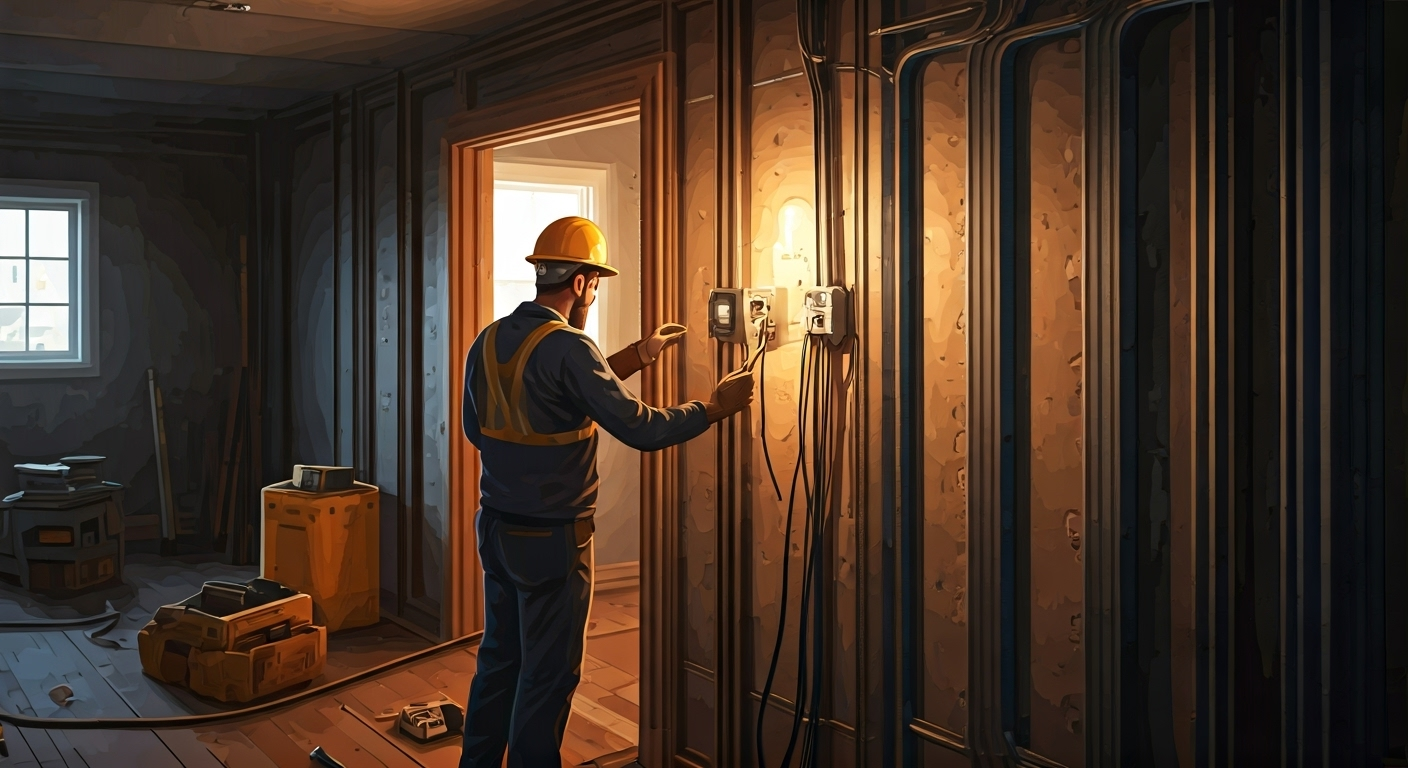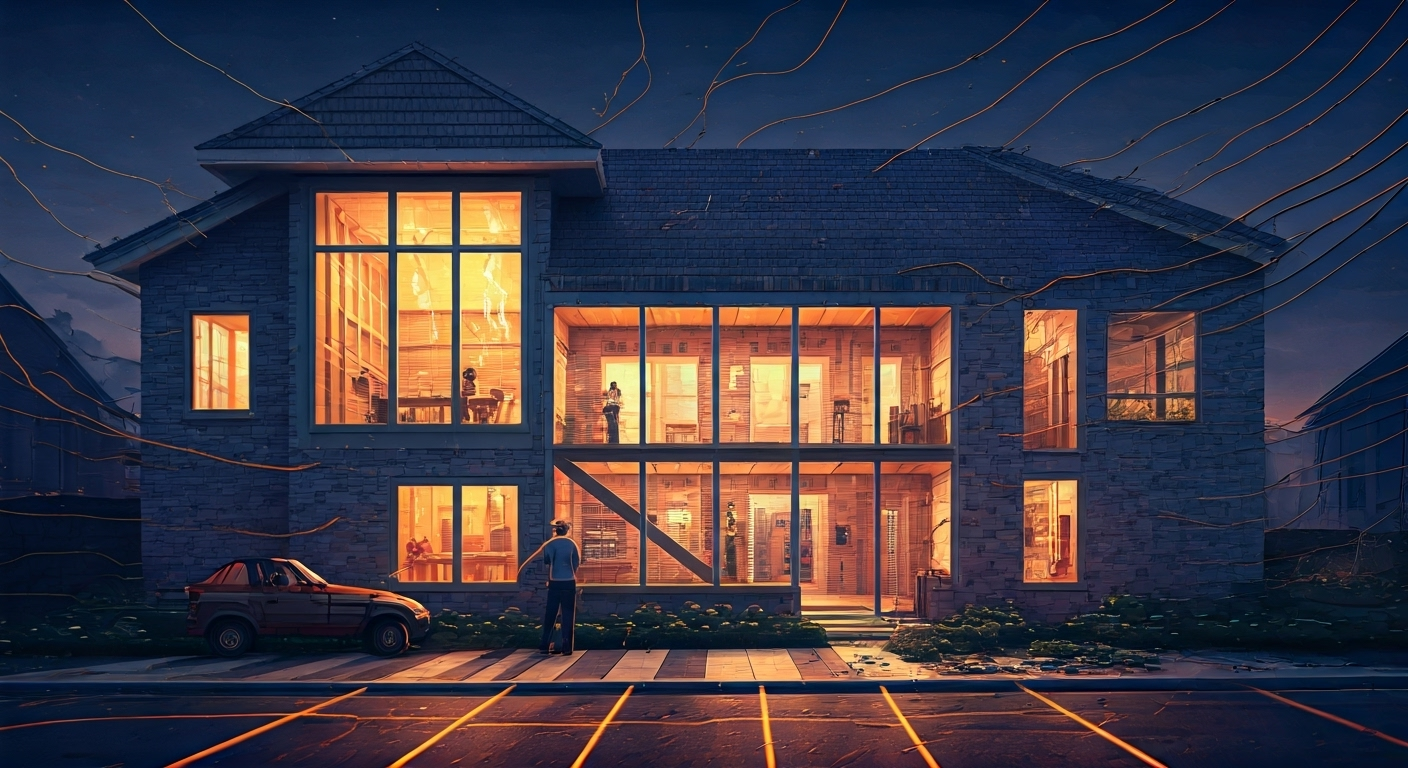Introduction
Are you building a new home and wondering how to handle the electrical work? Installing residential electrical systems takes careful planning to ensure your needs are met today and in the future. Whether you’re powering a smart home or preparing for energy-efficient technologies, the right electrical setup delivers comfort, safety, and peace of mind. For homeowners, understanding the process ensures your electrical installation is completed smoothly and up to industry standards. Let’s look at these essential steps together.
Planning and Designing Residential Electrical Systems

Planning your electrical systems is the first step to creating a safe and efficient setup for your home. Careful thought goes into determining your specific needs, from kitchen outlets to entertainment system wiring, ensuring functionality and convenience. For example, planning for future needs such as EV chargers or home office setups can save time and reduce expenses later on.
Equally important is designing with tangibles like efficiency and aesthetics in mind. This ensures your fixtures, outlets, and wiring blend seamlessly while providing reliable performance for years.
Assessing Electrical Needs and Load Calculations
Before starting the installation, taking stock of electrical needs ensures your system can handle daily demands. Ask yourself: Will you need extra outlets for exhaust fans or larger appliances like HVAC systems? Evaluating this early minimizes oversights and provides smooth operation.
Load calculations—involving the total power every electrical component requires—are vital. Homeowners often forget heavy-consumption devices like washer-dryers and electric ovens. These calculations prevent overloading circuits and costly electrical problems down the road.
Equally important is balancing load distribution. Electricians skillfully divide wiring across wall studs to avoid power interruptions. This detailed planning forms the backbone of an efficient system tailored for your lifestyle.
Creating Detailed Electrical Blueprints
Precision is key in every design phase of residential construction. Electrical blueprints map out where wiring, fixtures, and switches will be installed, offering clarity to contractors. For instance, an entertainment system wiring plan needs high accuracy for proper connectivity across wall studs.
Blueprints also detail fixture placement—for example, ceiling lights or exhaust fans—ensuring no aspect is overlooked. They’ll outline needed connections between devices and wiring channels, helping electricians work efficiently.
Thorough documentation ensures smooth coordination between electricians and other professionals on-site, speeding up the process without compromising on quality. It becomes your manual for a stellar installation.
Obtaining Permits and Meeting Code Requirements
Residential electrical construction demands compliance with strict regulations. Acquiring permits before starting any wiring guarantees your project aligns with the National Electrical Code and your local building codes. Permits safeguard your investment against fines or delays.
Additionally, inspections after each installation phase ensure systems function safely and efficiently. Meeting these legal requirements is non-negotiable for new home electrical services, creating a solid foundation for your next steps.
Securing Required Inspections and Approvals
Installing electrical services smoothly often hinges on proper inspections and approvals. Routine checks provide assurance that components—wiring, outlets, switches—meet operational standards. Think of these inspections as peace of mind for homeowners.
Electrical problems often crop up from missed oversight. Here, inspectors catch wiring errors early, ensuring all installations comply with the NEC and local building codes. These approvals prevent potential hold-ups like denied occupancy certificates later.
When you collaborate with certified people, your new home project progresses securely and uninterrupted.
Wiring and Installation Process

Getting into electrical installation requires precision and expertise. Wiring serves as the lifeline of your home’s connections, involving proper insulation and fitting within wall studs.
An electrician’s role is pivotal here. Their skill ensures energy flows securely into switches, lighting fixtures, and other devices—supporting your unique electrical systems hassle-free.
Rough-In Wiring for Outlets, Switches, and Fixtures
The rough-in wiring phase sets the stage for your home’s electrical system. It’s about running wires through clear wall studs for outlets, switches, and fixtures. For instance, entertainment system wiring requires detailed placement to avoid mistakes.
Electricians also install protective coverings at this stage, ensuring no damage before drywall goes up. Outlets for exhaust fans or smart HVAC systems develop precision here.
Without proper rough-ins, contractors may miss vital sections—creating issues later. This phase supports efficiency, providing ample peace of mind for seamless futures.
Panel Installation and Circuit Breaker Setup
Safe electrical systems start with panel installation. It’s where all wiring converges into a manageable hub for your home’s power supply. Electricians detail circuits strategically here while upgrading amperage to meet homeowner preferences.
High-quality circuit breaker setups minimise risk. They shut down during system overloads preventing costly electrical problems.
Moreover, new services for energy-intensive devices, like HVAC components, guarantee future capacity needs. This final configuration ensures long-term safety and reliability.
Conclusion
In summary, successfully navigating the complexities of residential electrical construction requires careful planning, adherence to codes, and a thorough understanding of the installation process. From assessing electrical needs to securing necessary permits and inspections, each step plays a crucial role in ensuring a safe and efficient system. By following the essential steps outlined in this blog, you can minimize risks and guarantee that your project meets all regulatory standards. If you are ready to take your electrical project to the next level, consider reaching out for a consultation to discuss your specific needs and get expert guidance on moving forward.
Frequently Asked Questions
What is the typical order of steps in residential electrical construction?
The process includes electrical wiring through wall studs, rough-in installation of outlets and fixtures, panel installation, and finishing connections. Licensed electricians ensure all new construction electrical services meet safety and efficiency standards for long-term use.
How do I ensure my electrical system is up to code?
To meet code requirements, hire electrical contractors who follow the National Electrical Code (NEC) and local building codes. Inspections during each stage of electrical installation ensure compliance, plus added safety.
What safety measures should be taken during installation?
Safety measures include proper insulation and grounding, hiring a licensed electrician, and ensuring materials meet industry standards. These precautions minimize electrical problems like shocks or fire hazards, ensuring secure wiring throughout construction.
How long does the residential electrical construction process take?
The timeline for electrical work in a new home depends on the home’s size and complexity. Typically, installations span 1-3 weeks, but larger projects requiring intricate panel installations may take longer.
Do I need a licensed electrician for my project?
Yes, a licensed electrician ensures safety, compliance with the NEC and local building codes, and peace of mind. Their expertise is vital for quality electrical installation and avoiding future problems. A well-executed system is worth the investment.

